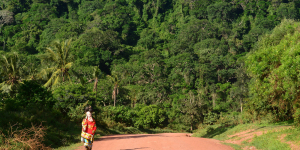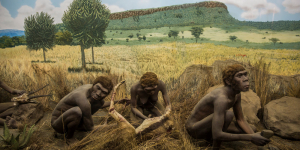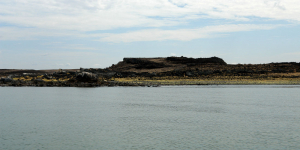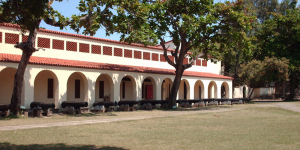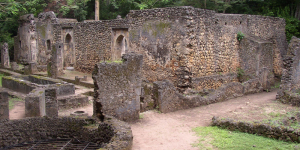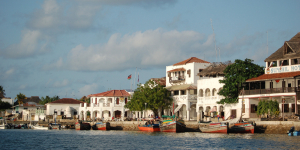Displaying items by tag: heritage
The Mijikenda Kaya Forests consist of 11 separate forest sites spread over some 200 km along the coast containing the remains of numerous fortified villages, known as kayas, of the Mijikenda people. The kayas, created as of the 16th century but abandoned by the 1940s, are now regarded as the abodes of ancestors and are revered as sacred sites and, as such, are maintained as by councils of elders.
The site is inscribed as bearing unique testimony to a cultural tradition and for its direct link to a living tradition
The National Museum of Kenya houses collections, and temporary and permanent exhibits. Today the National Museum of Kenya manages over 22 regional museums, many sites, and monuments across the country.
The Museum aims to interpret Kenya’s rich heritage and offers a one stop for visitors to sample the country’s rich heritage both for education and leisure. In addition to the museum, visitors are treated to a variety of shopping and dining facilities, as well as botanical gardens that offer a serene environment.
Also within the grounds are the famous Snake Park, Botanical Gardens and Nature Trail.
Lake Turkana is a massive inland sea, the largest desert lake in the world. This single body of water is over 250 kilometers long- longer than the entire Kenyan coast. It is widely known as the Jade Sea, because of the remarkable, almost incandescent, colour of its waters.
Turkana has one of the longest living histories on earth, and recent fossil evidence unearthed at Koobi Fora has led to the Lake being referred to as ‘The Cradle of Mankind’. The site lies at the heart of the Sibiloi National Park, a place of stark beauty and prehistoric petrified forests.
The Lake itself is a natural treasure, with the world’s single largest crocodile population. In Turkana these reptiles grow to record size, with some of the largest specimens found on remote windswept Central Island.
The most saline of Africa’s large lakes, Turkana is an outstanding laboratory for the study of plant and animal communities. The three National Parks serve as a stopover for migrant waterfowl and are major breeding grounds for the Nile crocodile, hippopotamus and a variety of venomous snakes. The Koobi Fora deposits, rich in mammalian, molluscan and other fossil remains, have contributed more to the understanding of paleo-environments than any other site on the continent.
Fort Jesus was declared a national park in 1958, and in 2011, it was declared a World Heritage Site by UNESCO and highlighted as one of the most outstanding and well-preserved examples of 16th-century Portuguese military fortifications. The fort is Mombasa's most visited tourist attraction.
The Portuguese built Fort Jesus in 1593. The site chosen was a coral ridge at the entrance to the harbor. The Fort was designed by an Italian Architect and Engineer, Joao, Batista Cairato. The earliest known plan of the Fort is in a manuscript Atlas by Manuel Godinho de Heredia – dated 1610 which shows the original layout of the buildings inside the Fort.
The Fort was used as barracks for the soldiers. When the British protectorate was proclaimed on the 1st of July 1895, the Fort was converted into a prison. The huts were removed and cells were built. In 1958, Fort Jesus was declared a National Park in the custody of the Trustees of the Kenya National Parks. Excavation was carried out and the Fort became a museum in 1962. The Fort is now an important historical landmark in the East African region.
Kenya’s Machu Picchu, the lost city of Gedi Once buried in jungle, this ancient Swahili town was not discovered until the 1940s.
Built in the 13th century and abandoned in the 17th century – some say due to the arrival of cannibals – it features ruined sultan’s palaces, sunken gardens and a network of medieval streets. It is also reputedly haunted by a dark creature that always seems to have just disappeared around a bend in the walls: yet always seems to be watching you.
Lamu Old Town is the oldest and best-preserved Swahili settlement in East Africa, retaining its traditional functions.
Built in coral stone and mangrove timber, the town is characterized by the simplicity of structural forms enriched by such features as inner courtyards, verandas, and elaborately carved wooden doors.
Lamu has hosted major Muslim religious festivals since the 19th century, and has become a significant centre for the study of Islamic and Swahili cultures.
The town of Lamu began life as a 14th century Swahili settlement, but the island has seen many visitors and influences, including Portuguese explorers, Turkish traders and the Omani Arabs.
All left their mark, but Lamu developed its own particular culture, which has ultimately endured.
Lamu’s narrow streets remain unchanged, and in the markets and squares around the fort life moves at the same pace as it always has.
There are no vehicles on this island, and the donkey and the dhow remain the dominant form of transport.
The people of Lamu are great believers in tradition and custom, and this is a strong society built on a respect for the past.
For the traveller, Lamu is a hypnotically exotic experience, made even more enjoyable by the relaxed and welcoming attitudes of the locals.

